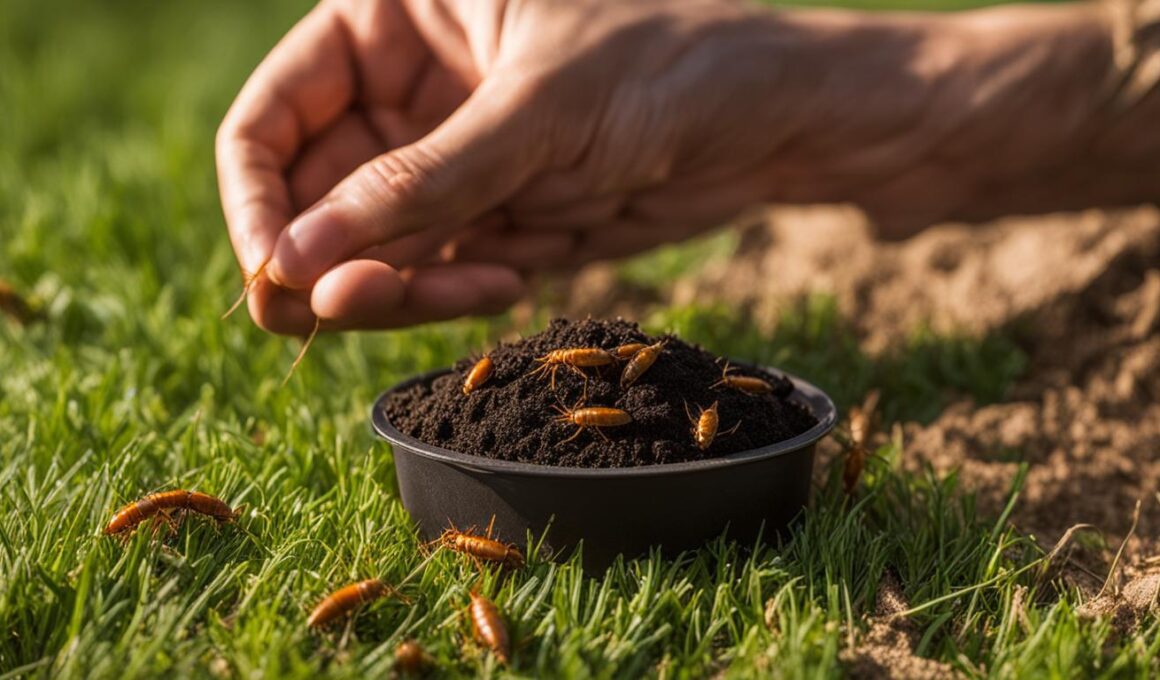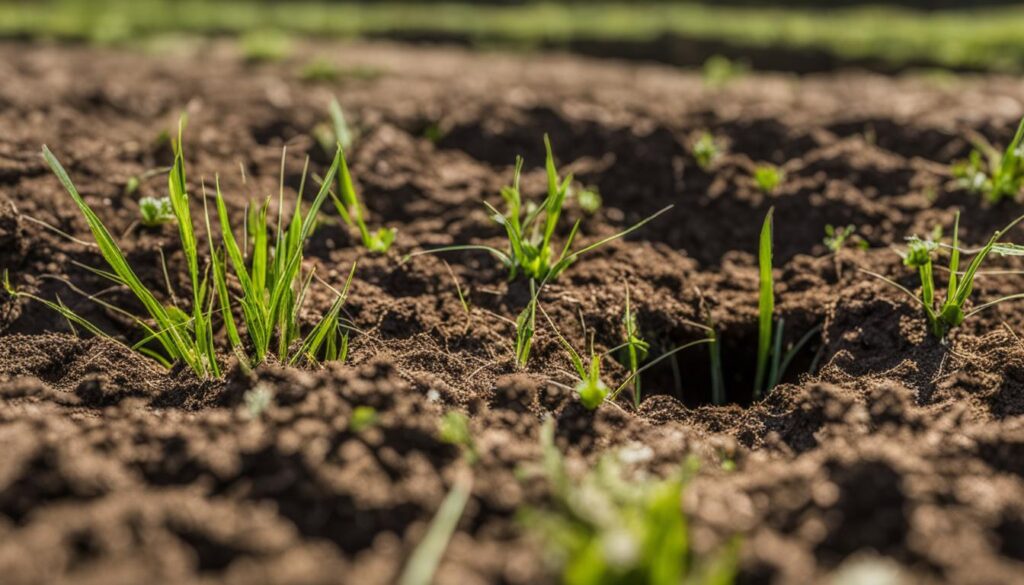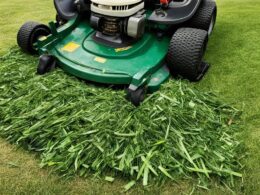Welcome to your complete guide on how to kill mole crickets and get rid of them for good. If you’re dealing with a mole cricket infestation in your lawn, you know just how damaging these pests can be. But don’t worry, we’re here to help you with effective mole cricket treatments.
Mole crickets are lawn pests commonly found in the Southeastern United States. They damage grass and other plants by creating tunnels under the soil. To successfully eliminate them, it’s important to properly identify the mole crickets and locate the areas with their activity. You’ll recognize them by their brownish-gray bodies, wide front legs shaped like spades, and the chirping noise they make, similar to crickets.
In this comprehensive guide, we’ll walk you through the steps to effectively treat and prevent mole cricket infestations. From identification to treatment options, we’ve got you covered. You’ll learn how to choose the right products, like Bifen LP Granules and Dominion 2L, for fast and long-lasting mole cricket control.
But it doesn’t end there. We’ll also share tips on preventing mole cricket reinfestation, so you can keep your lawn free from these destructive pests for good. Regular monitoring, lawn maintenance, and proper watering practices play a crucial role in keeping mole crickets away.
So, if you’re ready to say goodbye to mole crickets and protect your lawn, let’s dive into the details of mole cricket treatment and prevention. Together, we’ll ensure your lawn stays lush, green, and pest-free.
How to Identify Mole Cricket Infestation
To effectively control mole crickets, it is important to properly identify them. Mole crickets have brownish-gray bodies with wide front legs shaped like spades. Adult mole crickets are about 1.25 to 1.5 inches long with wings, while nymph mole crickets are smaller and wingless. They are most active in late spring or early summer.
Signs of mole cricket damage include patches of damaged or dead grass and the presence of mole cricket eggs, nymphs, or adults. A soap solution can be used as a flushing agent to monitor for mole cricket presence.
Treatment Options for Mole Crickets
When it comes to effective mole cricket control, two recommended products stand out: Bifen LP Granules and Dominion 2L.
For successful mole cricket treatment, apply Bifen LP Granules to your lawn between late spring and early fall. The application rate should be based on the square footage of the treatment area. These granules have a residual effect, providing long-term control against mole crickets.
To further combat these pests, consider using Dominion 2L, a systemic insecticide. It should be applied as a water solution, with a rate of 0.6 fl. oz. per gallon of water for treating every 1,000 sq. ft. of your lawn. With its long-lasting effects, Dominion 2L ensures mole cricket infestations are kept under control.
Remember, your safety is paramount, so always follow the necessary safety precautions when handling these pesticides. Additionally, timing the application correctly will maximize the effectiveness of both products.
Take a proactive approach to mole cricket treatment with Bifen LP Granules and Dominion 2L, and wave goodbye to these destructive lawn pests.
Preventing Mole Cricket Reinfestation
Once you have successfully eliminated the mole cricket problem in your lawn, it is crucial to take preventive measures to avoid reinfestation. Regularly monitoring your lawn is essential to catch any signs of mole crickets early on. By staying vigilant, you can quickly address any potential infestations before they become a major issue.
To create a barrier against mole crickets and keep them away from your lawn, consider applying Dominion 2L and Bifen LP as a preventative treatment. These products are effective in warding off mole crickets and preventing them from returning. Follow the application instructions carefully to ensure maximum effectiveness.
Improving soil moisture levels can also help prevent mole cricket infestations. Mole crickets are attracted to damp soil, so maintaining proper soil moisture can discourage their presence. Additionally, regular lawn maintenance practices like dethatching and fertilization can strengthen your lawn and make it less susceptible to mole cricket damage.
Proper watering practices are equally important in mole cricket prevention. Avoid overwatering your lawn, as excessive moisture can create an ideal environment for mole crickets to thrive. Instead, water deeply and infrequently to encourage healthy root growth and discourage mole crickets from taking up residence.
Remember to be mindful of the potential toxicity of insecticidal products to bees. If you have flowering plants in your yard, consider taking extra precautions or opting for alternative methods to prevent mole cricket reinfestation.
By implementing these preventative measures, you can keep mole crickets away from your lawn and ensure long-term protection against reinfestation.
Are the Methods for Eliminating Ant Hills Similar to Eliminating Mole Crickets?
Eliminating ant hills and mole crickets requires different strategies, due to their distinct habits and biology. To eradicate ant hills fast, a solution often entails baits that ants carry to the queen, while combating mole crickets may involve targeted insecticides to reach them underground. Each pest demands a tailored approach.
Conclusion
Mole crickets can wreak havoc on your lawn, causing damage to grass and other plants. However, with the right approach, you can effectively control and eliminate these pests. The first step is proper identification and inspection to determine the extent of the infestation and locate problem areas.
When it comes to mole cricket control, using products like Bifen LP Granules and Dominion 2L can make a significant difference. These insecticides have proven to be highly effective in eliminating mole crickets and preventing reinfestation. Follow the application instructions carefully and time the treatments correctly for optimal results.
In addition to using insecticides, regular lawn maintenance plays a crucial role in keeping mole crickets at bay. Implement good practices such as dethatching, fertilization, and proper watering to create a healthy lawn that is less susceptible to infestations. By taking these preventive measures, you can significantly reduce the risk of mole cricket problems in the future.
Don’t let mole crickets destroy your beautiful lawn. Take action today and say goodbye to these destructive pests. With the right treatment and preventive measures, you can reclaim your lawn and enjoy a lush, pest-free environment.











